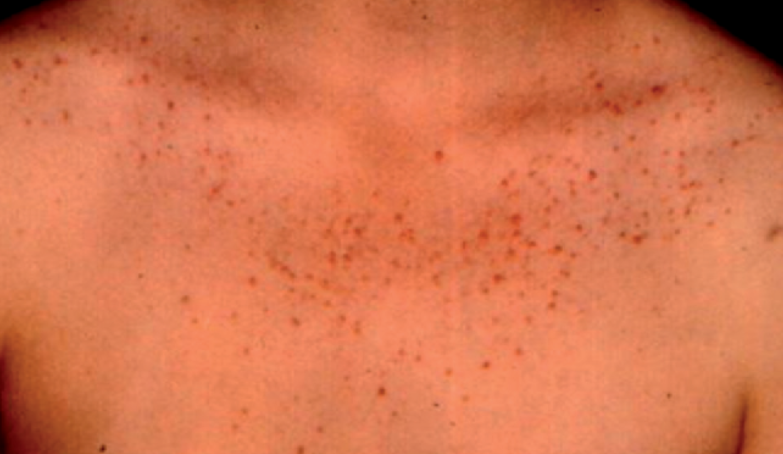Mallorca acne (acne aestivalis) is an acneiform dermatosis that suddenly occurs during the summer season and spontaneously regresses during winter. It is characterized by the appearance of flat red follicular papules on sun-exposed areas of the body. The ICD-10 code for Mallorca acne is L70.8.
The disease occurs equally in women and men, typically between the ages of 20 and 40, usually without a previous history of acne. The disease shows a clear seasonal pattern, with initial manifestations appearing in the spring, peaking in the summer, and symptoms disappearing completely in the fall and winter.
The main features of the disease were described in the original publication by Hjorth (1972), where the sudden onset of acneiform eruptions after sun exposure was observed. These eruptions persisted throughout the holiday period and into the following weeks at home in several young Scandinavian individuals who had vacationed in Majorca in the spring.
The aetiology and pathogenesis are not fully understood. UV radiation, either from sunlight or artificial sources, is undoubtedly an etiological factor. Eruptions identical to Majorca acne have been observed in patients receiving UVA and PUVA therapy with 8-methoxypsoralen for the treatment of chronic dermatoses. This suggests that the damaging effects lie in the long-wave ultraviolet range. However, it is still unknown how and why only certain individuals respond.
One theory is that UVA activates porphyrins produced by Propionibacterium acnes in sebaceous follicles. Another theory is that sunscreens and body lotions used during sunbathing, which have photocomedogenic properties, promote the development of the disease. However, there is a lack of evidence supporting this hypothesis since Mallorca acne suddenly appears in the absence of comedones. It has been suggested thit the condition represents a clinical papular variant of polymorphic light eruption.- Acne vulgaris
- Acneiform dermatoses
- Bacterial folliculitis
- Pityrosporum folliculitis
- Eosinophilic folliculitis
- Pseudomonas folliculitis
The first-line therapy is tretinoin cream.
The second-line therapy is benzoyl peroxide, applied 1-2 times a day.
Systemic and topical antibiotics are not effective. Topical corticosteroid preparations only worsen the condition.
To reduce the intensity and duration of relapses, gradual increase in the dose and duration of exposure to artificial ultraviolet radiation, UVB and/or UVA, before the spring-summer period, may be helpful.

